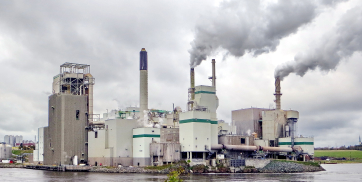This week features a special science edition of the Highwood Bulletin! In recent weeks there has been a great deal of new research in the emissions management space. We are going to catch you up on studies including evaluation of new methane measurement technologies, temporal variability of methane emissions from O&G production sites, methane leak repair failures in distribution systems, and two new studies measuring “ultra-emitters” from space – many of which are from Turkmenistan.
Peer Reviewed: Can new mobile technologies enable fugitive methane reductions from the oil and gas industry?
A new study led by Highwood’s President Thomas Fox and colleagues at the University of Calgary uses LDAR-Sim to show that new methane monitoring technologies have the potential to cost-effectively reduce fugitive methane emissions but only if deployed strategically. The study has policy implications for methane monitoring regulations in O&G. Read more here.
Peer Reviewed: Use of Short Duration Measurements to Estimate Methane Emissions at Oil and Gas Production Sites
New research led by Erin Tullos of University of Texas and Gas Technology Institute shows that repeat “snapshot" measurements of methane emissions from natural gas production sites are highly variable for individual sites but can be reconciled when averaged across multiple facilities. The study has implications for identifying techniques for discerning unusually high emitting sites. Read more here.
Peer Reviewed: On the Long-Term Temporal Variations in Methane Emissions from an Unconventional Natural Gas Well Site
A new study by researchers at West Virginia University presents results from 17 comprehensive methane audits at a single production site over the course of 4 years. Results show extreme temporal variability in emissions ranging from 78 g/h to 43 kg/h. Most of the variability was attributable to a produced water storage tank. Read more here.
Peer Reviewed: Repair Failures Call for New Policies to Tackle Leaky Natural Gas Distribution Systems
A new analysis of repair effectiveness of methane leaks in the Massachusetts distribution system suggests that repair failure is relatively common. Although finding leaks does not reliably lead to elimination of emissions, the authors find that the repair effectiveness is neglected in policy. Read more here.
Peer Reviewed: Concurrent variation in oil and gas methane emissions and oil price during the COVID-19 pandemic
A recently published study led by David Lyon at Environmental Defense Fund has found that methane emissions from O&G activity in the Permian Basin declined markedly when the price of oil collapsed during the COVID-19 pandemic. The authors believe the decline can be attributed to a decline in drilling and flaring of associated gas typical with new wells, which suggests that high methane emissions typically observed in the Permian may be the result of gathering and midstream infrastructure that is operating over capacity. Read more here.
Preprint: Field Performance of New Methane Detection Technologies: Results from the Alberta Methane Field Challenge
A new study led by Devyani Singh at Harrisburg University of Science and Technology presents results from the Alberta Methane Field Challenge, which compared the performance of eleven emerging methane measurement technologies. The study found that new technologies are effective at detecting methane, but that quantification remains a major challenge for most solutions. Read more here.
Preprint: Global Assessment of Oil and Gas Methane Ultra-Emitters
A new study using methane measurement data from the TROPOMI instrument aboard the Copernicus Sentinel-5 satellite has found that “ultra-emitters” (of which 1800 were identified globally in 2019 and 2020) are responsible for 8-12% of total global methane emissions from O&G production. The study found that a large fraction of these sources come from Russian, Turkmenistan, and the U.S., and that they can be addressed at relatively low cost. Read more here.
Preprint: Satellites unveil easily-fixable super-emissions in one of the 1 world's largest methane hotspot regions
Research using satellite data from three different methane sensing satellites has identified 29 different emissions sources above 1700 kg/h on the west coast of Turkmenistan between 2017 and 2020. The authors estimate that nearly all of these sources are from unlit flares that are intended to burn unwanted natural gas associated with crude oil production. The authors show that proper maintenance of infrastructure could easily prevent these sources. Read more here.





